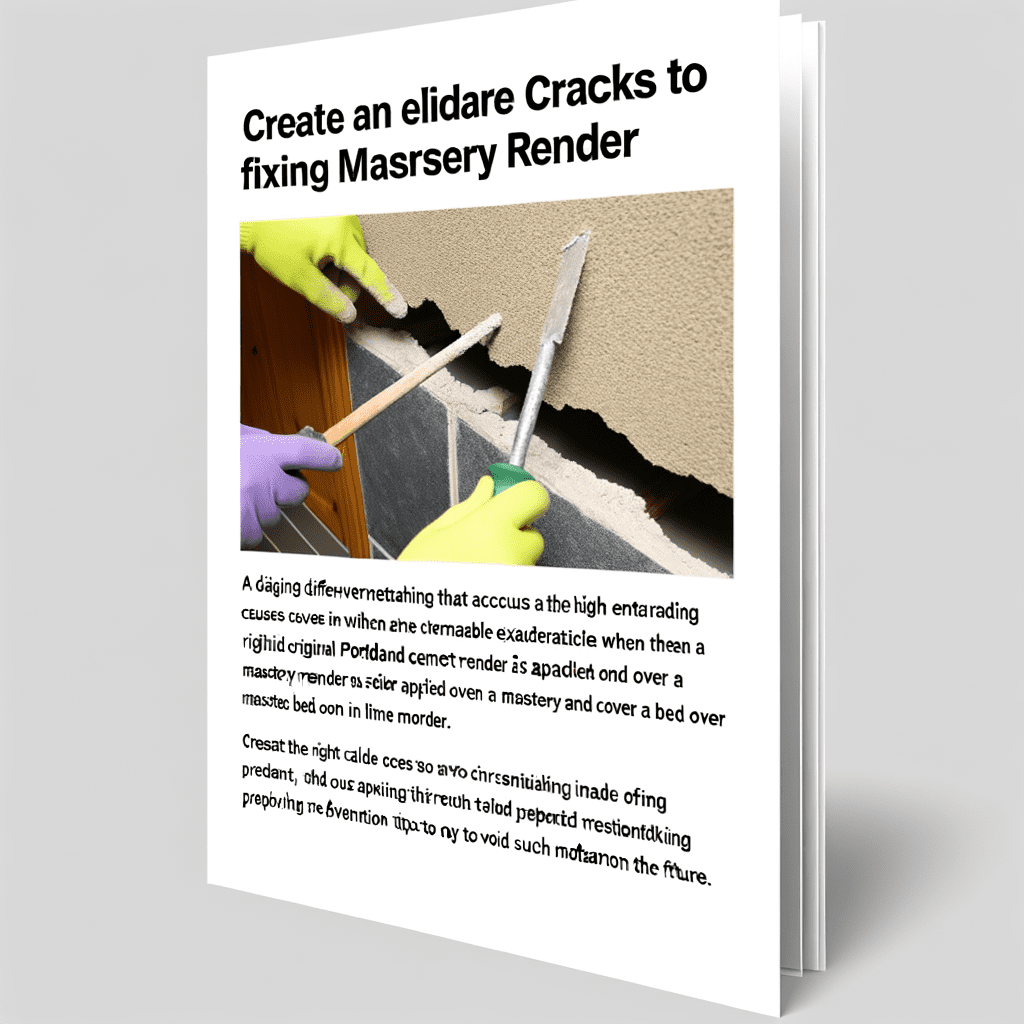The Comprehensive Guide to Cracks in Masonry Render: Causes and Remedies
Understanding Masonry Cracks
When considering a property purchase, it’s vital to be informed about every aspect of the building’s construction. One such aspect takes centre stage today: Masonry render often referred to as render, and the issues that emerge when thermal differentials cause it to crack. The vision of unsightly cracks on your property can be distressing, but understanding their root causes, distinguishing harmless cracks from those signalling serious underlying issues, and identifying appropriate remedies can help you navigate this task intelligently.
Masonry render is an integral part of many buildings, providing a unique appearance and serving as the first line of defence against weather elements. Its versatility in terms of varying finishes is a key asset to architects and homeowners alike. However, one common yet easily overlooked complication is cracks appearing on the rendered surface. This occurrence, often due to differences in thermal properties of render and the underlying masonry, requires diligent attention and practical remedies.
Masonry Render and Causes of Thermal Differentials
Thermal differentials are one of the key contributors to unfavourable cracks in masonry render. To grasp the magnitude of their impact, it’s crucial to understand what thermal differentials are. These occur when different components of a building (like Original Portland Cement (OPC) render and a masonry wall bed on a lime mortar) expand or contract at dissimilar rates due to temperature variations.
OPC is a widely used render due to its strength, stability and resistivity to deterioration. However, it lacks the flexibility of its counterpart, lime mortar. This lack of flexibility coupled with its rigid nature can lead to tensions developing on the surface of the OPC when it’s subjected to fluctuating temperatures. On the other hand, the masonry wall bed on a lime mortar beneath the render can better accommodate these thermal movements, leading to a thermal differential between the two substances. Consequently, such disparity likely results in stress fracturing and the visual manifestation of this internal tension – cracks in the masonry render.
Tracing the Culprits: Other Causes of Cracks in Masonry Render
Although thermal differentials are primarily responsible for cracks in masonry render, several other factors also contribute to this common issue. Some of these are:
1. Structural Movement: Buildings inevitably shift and settle over time due to various influences like changes in ground conditions, and heavy loads, leading to cracks in the render.
2. Poor Quality of Render or Incorrect Application: A poorly mixed or inadequately applied render, or render applied in adverse weather conditions, can result in a weaker surface prone to cracking.
3. Moisture Content: Excess water content within the render can seep into the masonry beneath, causing it to expand. This expansion might lead to cracks in the render.
Effectively Fixing Cracks in Masonry Render
Now that you know what causes render to crack, the next big question is how to fix these cracks efficiently. Thankfully, there’s a range of solutions available to tackle cracks depending on their severity and the underlying causes you’ve identified.
1.Repairing Minor Cracks: For small superficial cracks, a simple repair process using a suitable filler or sealant can work effectively. Always ensure the crack is clean from loose fragments or dust.
2. Overhauling Major Cracks: Wider, deeper cracks that hint at more serious issues may require a more comprehensive approach. It could involve removing damaged sections of the render and reapplying a compatible mix.
3. Seeking Professional Guidance: For persistent, recurring, or structurally significant cracks, it’s best to seek professional help. Building surveyors, such as the team at Flettons, can provide a thorough analysis of your property’s condition and recommend suitable remedial measures.
Pioneering Preventive Measures
While fixing cracks in masonry render is crucial, adopting pre-emptive actions can also significantly reduce the chances of such fissures appearing. This could include ensuring a flexible, durable, and weather-appropriate render; optimising the water content within the render mix; or considering renders with crack-bridging abilities.
Moreover, regular inspections of your property can allow you to spot and manage minor cracks before they evolve into more serious issues, saving both time and resources.
At Flettons, we’re committed to safeguarding your investment. When considering a property purchase, trust our seasoned expertise to reveal any hidden threats. For a thorough building survey, get your instant quote through our quote calculator or reach out directly at 0203 691 0451. Your home’s safety is our top priority.
—————————————————————————————

